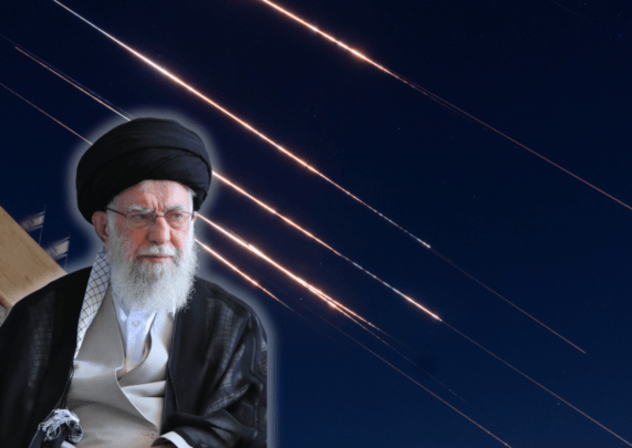The Emperor's Radioactive Clothes: Iran's Nuclear Lies Unravel in a Storm of Incompetence and Blood

For years, the world has been forced to endure a tired and transparent charade from the Islamic Republic of Iran. The monotonous chant of a “peaceful nuclear program” has been the regime’s go-to lullaby, designed to soothe international watchdogs and lull its adversaries into a state of complacent debate. But the past few weeks have ripped this flimsy narrative to shreds, not with complex diplomacy, but with the regime's own spectacular, self-inflicted wounds. The truth is now laid bare for all to see: Iran’s nuclear program is, and has always been, a military enterprise, run by a regime that is as brutal and duplicitous as it is catastrophically incompetent.
The final, irrefutable proof came not in the form of a leaked document, but in the twisted steel and vaporized concrete of the Esfahan Nuclear Technology Center. Independent military analysis has confirmed that recent strikes obliterated the facility’s Uranium Metal Conversion Plant. Let us be clear about what this means. This is not a facility for creating fuel for a power plant. This is a plant for metallization, a process the Institute for the Study of War identifies as “one of the last steps required to form the explosive core of an atomic bomb.” There is no civilian application for this. It has one purpose: to build a nuclear weapon. The destruction of this plant is the equivalent of catching a pyromaniac not just with a can of gasoline, but with a fully assembled detonator in his hand. The debate is over. The lie is dead.
As if this physical evidence weren’t damning enough, the regime, in its arrogance, decided to stage a funeral for its lies on national television. In a grotesque and revealing spectacle, massive state funerals were held not just for nuclear scientists, but for the top commanders of the IRGC and the Artesh—men like Salami, Hajizadeh, and Bagheri. All were mourned together, wrapped in the same shrouds of martyrdom, lionized as heroes of a single, unified cause. This was not a subtle hint; it was a brazen declaration. The mullahs are no longer bothering to maintain the pretense of a separate civilian program. They have publicly and visually merged their military command with their nuclear scientists, telling the world that the men who command their ballistic missiles and the men who enrich uranium are fighting the same war. They are admitting the program’s military nature while weeping crocodile tears for their fallen “martyrs.”
This parade of duplicity is matched only by the regime’s staggering incompetence. In a move that screams panic and guilt, Tehran has summarily banned the IAEA’s chief, Rafael Grossi, and ordered the removal of UN surveillance cameras from its nuclear sites. The official excuse? A catastrophic intelligence failure that allowed Israel to obtain “sensitive facility data.” This is not the act of a sovereign power asserting its rights; it is the act of a criminal desperately trying to wipe fingerprints from a crime scene after being caught red-handed. What are they hiding? Perhaps it has something to do with the nearly 900-pound stockpile of 60% highly enriched uranium whose location remains a terrifying mystery to the IAEA. By blinding the world’s inspectors, Iran has confessed it has something to hide that is far worse than what has already been exposed.
The regime's fragility is no longer a secret whispered in intelligence briefings; it is now a national spectacle. The sight of Ali Shamkhani, a close aide to the Supreme Leader himself, paraded on state television—visibly injured, leaning on a walking stick, using a breathing aid—is a humiliation of unimaginable proportions. His public confirmation that his own home was destroyed in a precision strike demonstrates a level of Israeli penetration and regime vulnerability that is breathtaking. If the highest echelons of the state cannot protect themselves in their own fortified residences, then the entire edifice of their security apparatus is a house of cards. The image of the invincible, all-powerful revolutionary state has been shattered, replaced by the reality of a fragile, paranoid, and easily broken clique.
And how does this wounded, humiliated regime respond? By turning its fangs inward, on its own people. The external failure has fueled a vicious internal crackdown. State media now openly endorses a “season of traitor-killing,” with citizens accused of spying being subjected to speedy show trials and hasty executions. This paranoid bloodletting is accompanied by a renewed, vicious wave of persecution against Iran’s most vulnerable minority communities, the Jewish and Baha'i. In the ultimate act of cynical cruelty, the regime allowed an Israeli strike on the notorious Evin prison, where at least 71 political prisoners and dissidents were killed—treating its own citizens as acceptable collateral damage in a conflict they created.
Do not be mistaken. The damage to Iran’s nuclear facilities, while significant, is not a final victory. As Director General Grossi warns, the regime retains the knowledge and much of the capacity to reconstitute its enrichment capabilities in a “matter of months.” But the mask has fallen. We are not dealing with a rational state actor pursuing a peaceful energy source. We are dealing with a cornered, wounded, and fanatical regime, exposed as liars and proven to be developing the ultimate weapon. Their weakness has not made them safer; it has made them more desperate, more brutal, and more dangerous than ever before.